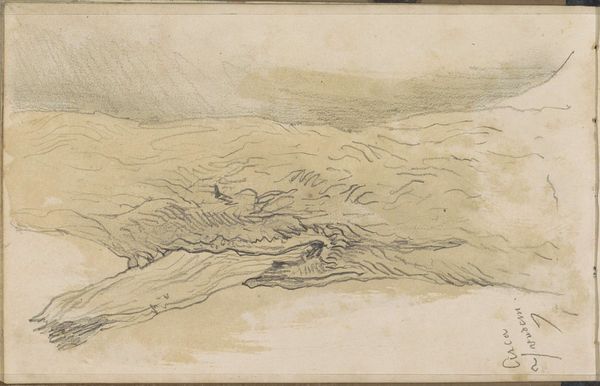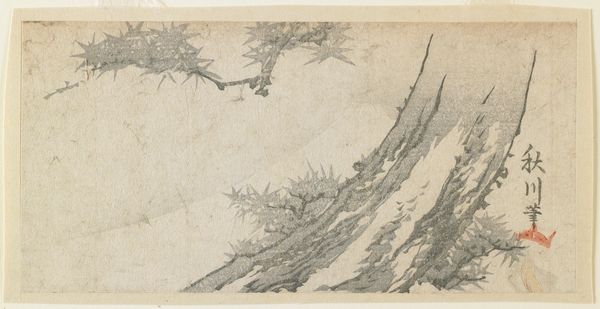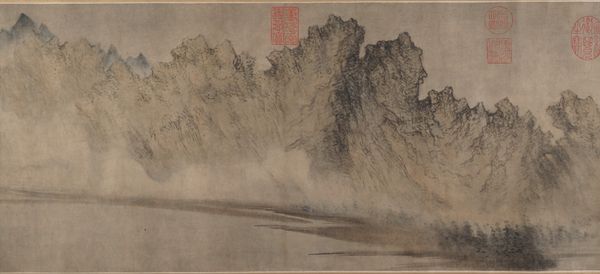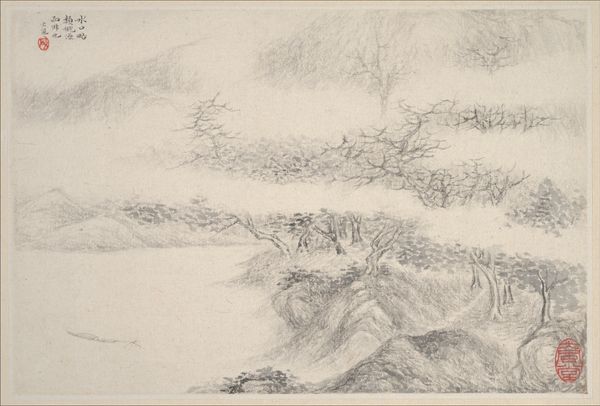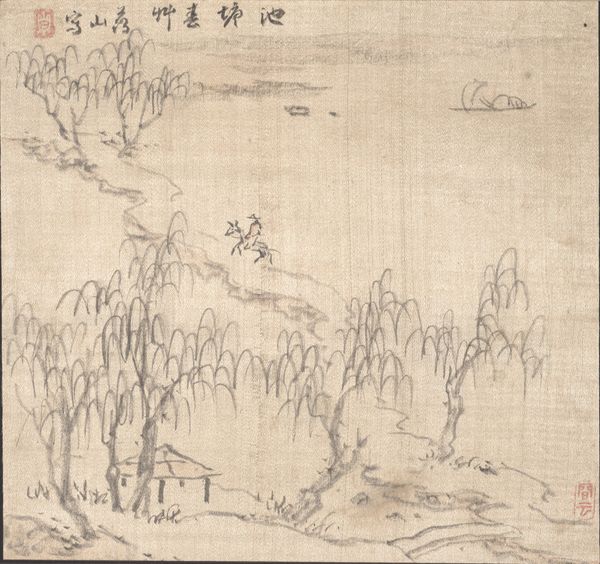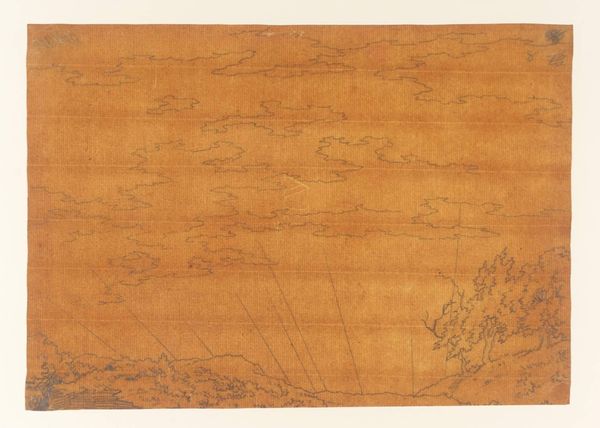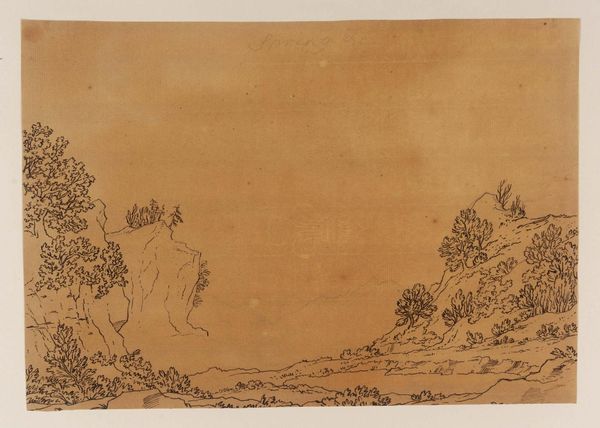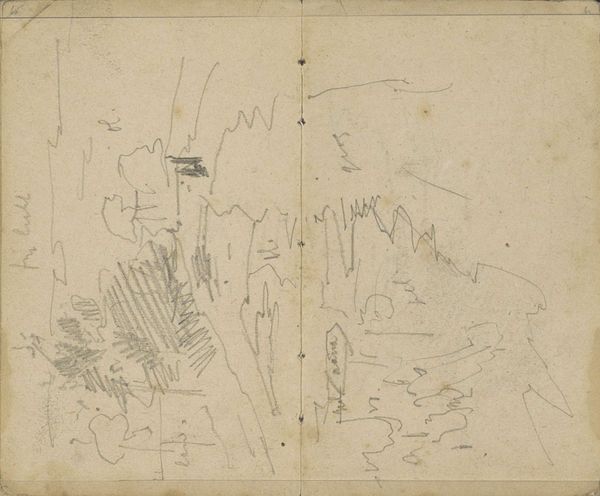
drawing, paper, pencil
#
drawing
#
pen sketch
#
landscape
#
paper
#
pencil
#
line
#
realism
Copyright: Rijks Museum: Open Domain
Curator: Here we have Johannes Tavenraat’s "Stam van een eikenboom," or "Trunk of an Oak Tree," rendered in pencil on paper, dating from 1868. Editor: The composition is intriguing! I find it rough, like a field sketch jotted down in haste. What can you tell me about its creation? Curator: Well, Tavenraat's process here reflects the period's fascination with direct observation. Consider the materiality: pencil and paper. Relatively inexpensive and readily available. It suggests a democratized art practice, away from the exclusive world of oils and formal portraiture. This speaks to a shift in the very definition of art-making itself. Editor: Absolutely. It reflects a shift towards the ordinary, but within that ordinariness, there's the hand of the artist elevating a simple subject into something worthy of our attention. Do we know the purpose behind sketches like these? Did it later serve a larger painting, or have intrinsic artistic merit in their own right? Curator: Sketches like these occupied a liminal space. They functioned as studies, preparations for larger works intended for public consumption and the market, yes. But also, I suspect, these images operated as displays of virtuosity, an appeal to a potential patron or a future student. Consider how the burgeoning art market influenced the kinds of skills an artist felt pressured to advertise, that mattered significantly to public perception. Editor: That's a useful context. And seeing it now, housed within the Rijksmuseum, undeniably elevates this sketch. What was once a means to an end, a material step in artistic production, is now itself art, isn't it? Curator: Exactly! The act of displaying it transforms our understanding and worth, which I find endlessly fascinating about viewing artwork inside institutions such as these. Editor: I agree. Examining how artistic methods change is key to grasping a more grounded interpretation of its origins, particularly if one wishes to explore beyond the boundaries of more conventional critical methods. Thank you, both for this information and for allowing a deeper observation on something often taken for granted.
Comments
No comments
Be the first to comment and join the conversation on the ultimate creative platform.
